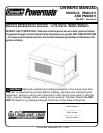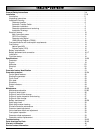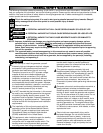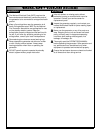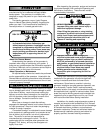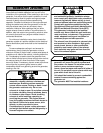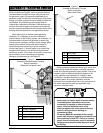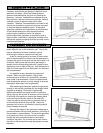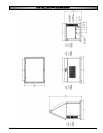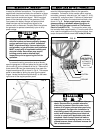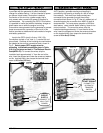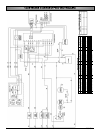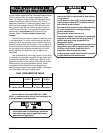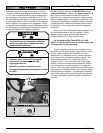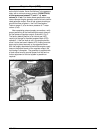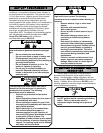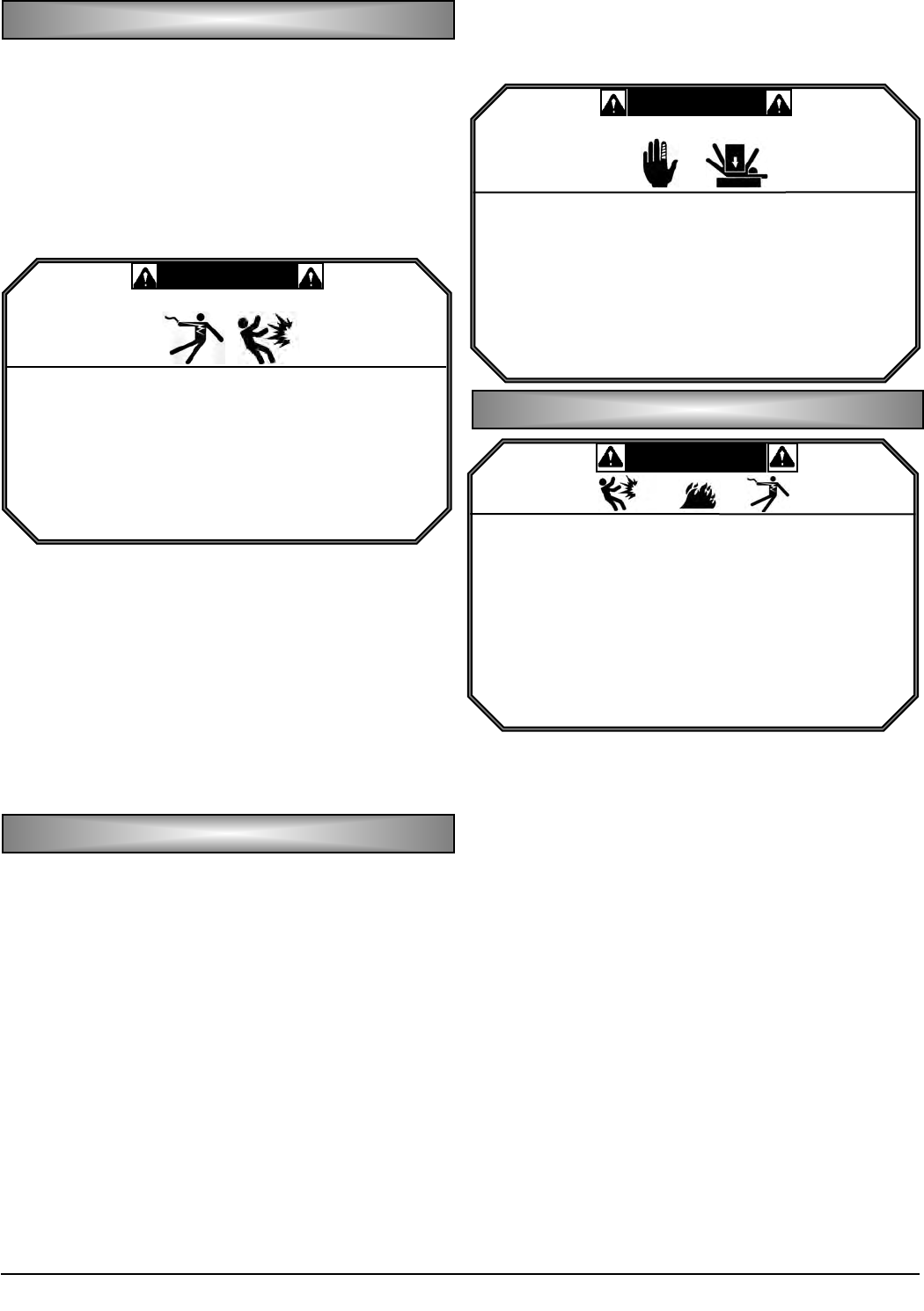
200-2341 5
The stationary standby electric generator is
manufactured for our customers to supply reliable
backup power. The generator is a compact unit,
designed to supply the power for your needs when utility
power fails.
The standby generator runs on Liquid Propane
Vapor or Natural Gas allowing flexibility for getting the
power you need. Fuel lines should be installed by a
licensed plumber or licensed gas technician.
•About the Owners Manual
Understanding the operation of the generator is
important when using or maintaining your system. If
there are any questions about the information supplied in
this Owner’s Manuals, call our customer service helpline
number shown on the cover of the manual.
•About Operation or Maintenance
All required safety checks that need to be performed
are the responsibility of the operators. Listed within the
Owners Manual are safety precautions to be followed to
prevent personal injuries to persons around the unit and
to prevent property damage.
Immediately inspect the generator carefully for freight
loss or damage upon arrival. If loss or damage is noted
at the time of delivery, require the person making the
delivery to note the loss or damage on the freight bill, or
affix his signature under the consignor’s memo of the
loss or damage. Contact the carrier for claim
procedures.
When loss or damage is noted after delivery,
segregate the damaged material, and contact the carrier
for claim procedures. Be sure to retain the packaging
material for carrier inspection.
“Concealed Damage” is understood to mean damage
to the contents of a package which is not evident at the
time of delivery by the carrier, but which is discovered
later. The carrier or carriers are responsible for
merchandise lost or damaged in transit. The title to
goods rests with the consignee when generators are
shipped F.O.B. factory, and only the consignee can
legally file a claim.
After inspecting the generator, engine and enclosure
for physical damage, finish reading the Operating and
Maintenance Instructions. These manuals contain
important safety information.
Taking a few moments to pre-plan before beginning
installation of the generator can provide significant
savings in materials and labor and lower future
maintenance. Some items to consider in planning
generator installation are safe generator operation, use
of an Automatic Transfer Switch, load requirements,
generator location, fuel supply, environmental conditions
and applicable local, regional or national codes. Some
areas may require building permits and/or detailed site
inspections prior to approving the unit for use. Check
with local authorities before starting installation.
Installation of a standby engine/generator system is
complex and should not be considered a Do-It-Yourself
project. Safe installation requires the skill and knowledge
of licensed electricians, plumbers, and professional
generator contractors. Contact an authorized dealer for
assistance with installation planning and referral to
properly qualified, licensed installing contractors.
II
II
NN
NN
TT
TT
RR
RR
OO
OO
DD
DD
UU
UU
CC
CC
TT
TT
II
II
OO
OO
NN
NN
UU
UU
NN
NN
PP
PP
AA
AA
CC
CC
KK
KK
II
II
NN
NN
GG
GG
II
II
NN
NN
SS
SS
TT
TT
RR
RR
UU
UU
CC
CC
TT
TT
II
II
OO
OO
NN
NN
SS
SS
RISK OF INJURY AND BEING CRUSHED
• HEAVY EQUIPMENT. Unbalanced weight.
Improper lifting can cause severe injury or
death and equipment damage.
• When lifting the generator or using hoisting
equipment, be careful not to touch overhead
power lines. Proper tools and equipment and
qualified personnel should be used in all
phases of handling and unpacking.
WWAARRNNIINNGG
RISK OF ELECTROCUTION AND/OR INJURY
• The installation of this equipment must be done
by licensed electricians contractors gas
technicians and plumbers. Installation must be
completed in conformance with NEC and local
electrical and building codes. Some areas may
require building permits and/or detailed sight
inspections prior to approving the unit for
operation.
WWAARRNNIINNGG
II
II
NN
NN
SS
SS
TT
TT
AA
AA
LL
LL
LL
LL
AA
AA
TT
TT
II
II
OO
OO
NN
NN
PP
PP
LL
LL
AA
AA
NN
NN
NN
NN
II
II
NN
NN
GG
GG
DDAANNGGEERR
• Improper installation can damage your
electrical system and cause property damage,
serious personal injury or death. Installation
MUST be performed by a licensed electrician
and plumber, or gas technician and installation
MUST comply with all applicable building and
electrical codes. Some areas may require
building permits and/or detailed sight
inspections prior to approving the unit for
operation.



